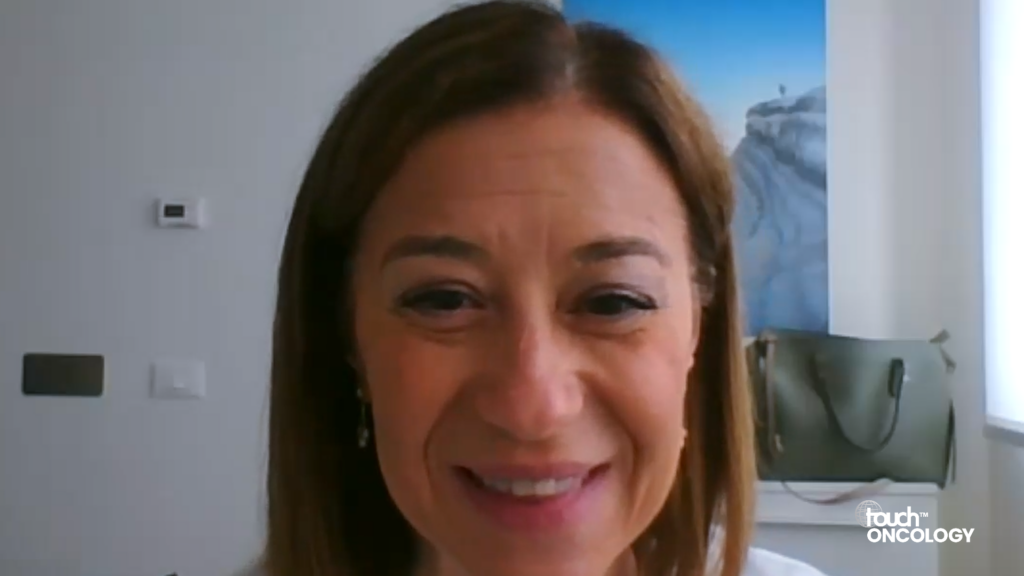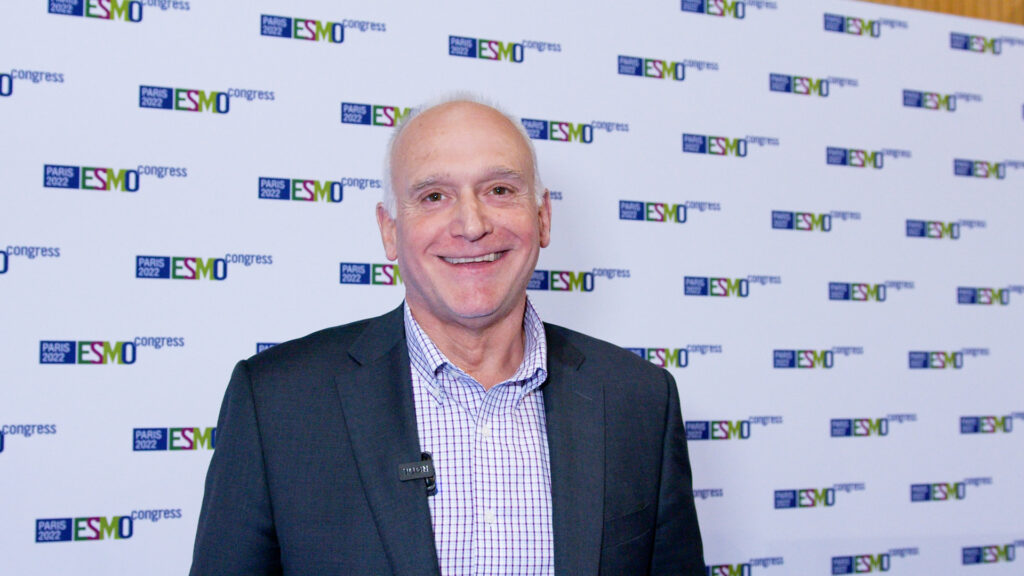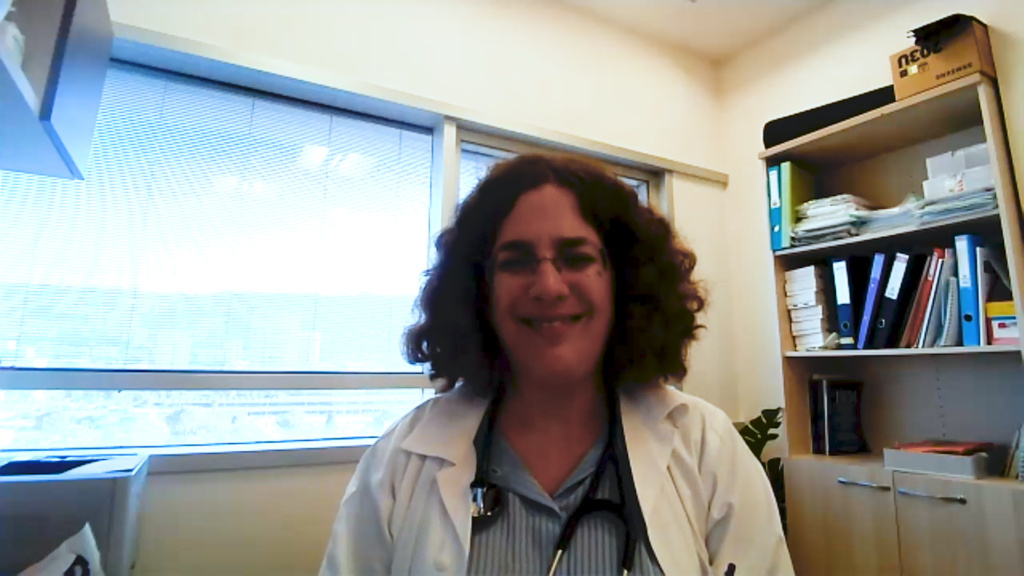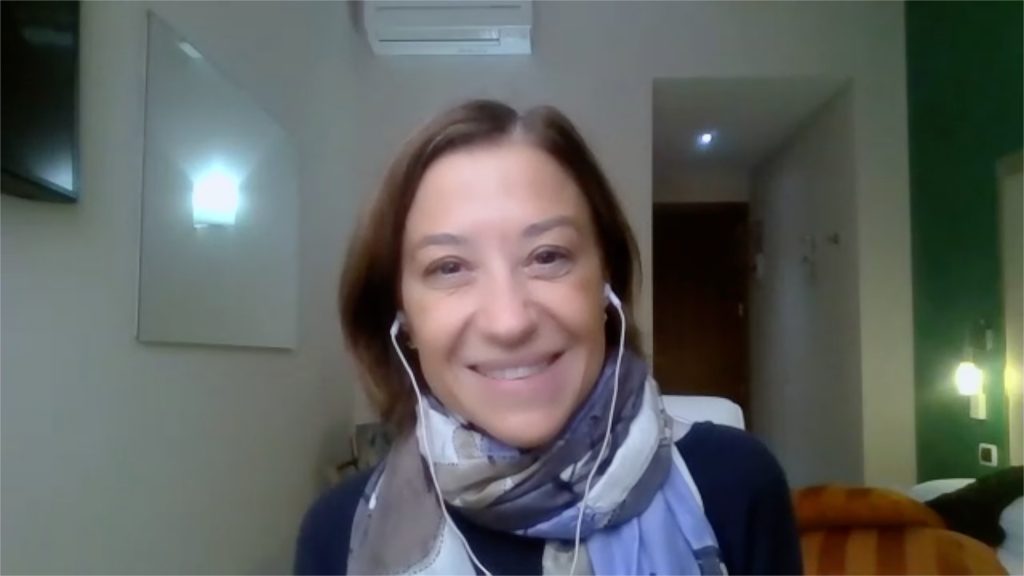The phase III PRIMA/ENGOT-OV26/GOG-3012 trial evaluated the efficacy of niraparib as a first-line maintenance treatment for patients with advanced ovarian cancer who responded to platinum-based chemotherapy. In this final analysis, no significant difference in overall survival was observed between niraparib and placebo in the overall or homologous recombination-deficient (HRd) populations. However, long-term progression-free survival and time to first subsequent therapy were significantly improved with niraparib, particularly in patients in the HRd subgroup. Safety outcomes were consistent with the known profile, and no new safety concerns were observed.
Prof Antonio González Martín (Department of Medical Oncology, MD Anderson Cancer Center, Madrid, Spain) joins touchONCOLOGY to discuss these findings.
The late-breaking abstract, ‘Final overall survival (OS) in patients (pts) with newly diagnosed advanced ovarian cancer (aOC) treated with niraparib (nir) first-line (1L) maintenance: Results from PRIMA/ENGOT-OV26/GOG-3012’ (LBA29) was presented at the European Society of Medical Oncology Congress 2024 on 13–17 September 2024 in Barcelona, Spain.
Questions
- Can you elaborate on the significance of the primary findings regarding overall survival in the phase III PRIMA/ENGOT-OV26/GOG-3012 trial?
- What factors contributed to the improved progression-free survival seen with niraparib, especially in the homologous recombination-deficient population?
- How did the rate of subsequent PARP inhibitor use in the placebo arm impact the trial outcomes?
- What were the key differences in time to first subsequent therapy between the niraparib and placebo groups?
- Could you explain the safety profile of niraparib and how data from the PRIMA trial compares with previous data?
Disclosures: Antonio González Martí discloses grant/research support from Tesaro, GSK and Roche Pharma. He is a member of the Advisory Board for Alkermes, Amgen, AstraZeneca, Clovis, Genmab, GSK, HederaDx, Abbvie/Immunogen, Incyte, Illumina, Mersana, MSD, Novartis, Novocure, Oncoinvent, PharmaMar, Regeneron, Roche, SOTIO, SUTRO, Seagen, Takeda, Tubulis and Zailab.
Transcript
My name is Antonio Gonzalez Martin. I am a medical oncologist. I work in Madrid at the Cancer Center Clínica Universidad de Navarra. I am the director of the cancer center, as well as the director of the medical oncology department, and I am also the president of the GEICO Group, which is the Spanish group for research in gynecological cancer.
1. Can you elaborate on the significance of the primary findings regarding overall survival in the phase III PRIMA/ENGOT-OV26/GOG-3012 trial?
So in the last ESMO meeting, we have presented the final analysis of the PRIMA study, including the long-term progression-free survival data, as well as the overall survival analysis, which was the final overall survival. What we found is that there is a sustained benefit in progression-free survival at five years in the [homologous recombination-deficient] HRD population, as well as in the intention to treat population. But, the analysis of the overall survival has not shown any difference between the niraparib or the placebo arm for the intention to treat population, nor in the subgroups that were preplanned to be analyzed, in particular the HRD and the [homologous recombination-proficient] HRP.
It is interesting that the median overall survival that we saw in this final analysis is much longer than expected. It is approximately 47-48 months in both arms. And the rate of patients alive at five years is approximately 42-44%, which is also higher than expected in this high-risk population that was included in the PRIMA study.
2. What factors contributed to the improved progression-free survival seen with niraparib, especially in the homologous recombination-deficient population?
In the PRIMA study, we included what we name ‘high risk population’ in terms of clinical factors. What I mean is that we take out those patients with a stage three and complete cytoreduction in the primary cytoreductive surgery, so that the patients with more chance to be cured are in the frontline. So we included stage four patients, any patients that require neoadjuvant chemotherapy, or any patient with a stage three and primary cytoreductive surgery, but with a microscopic residual tumour. But importantly, all these patients had a clear response to platinum-based frontline chemotherapy.
It was complete or partial response. And on top of that, the response according to the CA125 should be really good in terms of normalization or almost complete normalization of the 125. So these patients are those in which the PARP inhibitors are most effective.
What we have seen is a clear benefit in the progression-free survival. At five years, it is sustained in the HRD population and in the overall population, which is completely consistent with the results of other studies with PARP inhibitors in the first line. And we think that on top of the molecular biology of the tumour, the response to platinum-based therapy of our population was a clear surrogate of the benefit of the PARP inhibitors.
3. How did the rate of subsequent PARP inhibitor use in the placebo arm impact the trial outcomes?
Well, this is a very, very relevant question. So why has the PRIME study showed a clear benefit in progression-free survival at five years with a 20% difference in patients with a relapse in comparison with a placebo, has not showed benefit in the overall survival? The interpretation of overall survival in ovarian cancer trials can be limited for many factors. For instance, the patient characteristics, as I mentioned in this study, we included the high risk population.
The second factor is the long post-progression survival, and that is extremely long in the PRIMA study, particularly in the HRD population. It is longer than 50 months of progression of survival post-progression. And what happened in that so long post-progression survival that the patients receive many therapies, including crossover to the PARP inhibitor.
Indeed, in the HRD population, approximately 50% of the patients receive subsequent PARP inhibitor in subsequent lines. And in the BRCA mutated population, it is close to 60%. And, importantly, the majority of patients receive that PARP inhibitor. I’m talking about the patients that came from the placebo arm. The majority of them receive PARP inhibitors in the next line, in the second line. So, definitively, we think that the subsequent PARP inhibitor has impacted the overall survival of the PRIMA study.
4. What were the key differences in time to first subsequent therapy between the niraparib and placebo groups?
Well, actually, the time-to-first subsequent therapy was completely aligned and consistent with the benefit observed in progression-free survival. So we systematically have reproduced the benefit in progression-free survival also in the time-to-first subsequent treatment across all the different molecular subtypes, including HRD and HRP population.
5. Could you explain the safety profile of niraparib and how data from the PRIMA trial compares with previous data?
This is, from from my point of view, one of the most important findings in the PRIMA long-term or final analysis, because we haven’t found any new safety concern, and the safety profile of niraparib is consistent in the long-term with a well-known safety profile of this compound. We know that the most frequent adverse events are haematological, and, also, we have, asthenia, as one of the important side effects that we can observe with neuropathy as well as nausea. So these side effects are extremely consistent in the long-term with the safety profile already reported in the first analysis and in the second analysis that we published a couple of years ago. It’s important to highlight that the use of individualized starting dose reduced dramatically the incidence of haematological toxicity, which makes much more convenient for the patients to receive niraparib.
And on top of that, I would like to highlight an important new finding in PRIMA, that in the long term, there are no differences and no significant increment in serious adverse events as, for instance, leukaemias or myelodysplastic syndrome. The difference between neuropathy from placebo is <1%, and both are <2.5%. So, that is also an important finding of the long-term final analysis of PRIMA.
I think that taking together all the information that we have provided at the ESMO congress and already published in the analysis of oncology support the use of niraparib first maintenance in the frontline of patients with advanced ovarian cancer that have achieved a response to platinum in the first-line.
This content has been developed independently by Touch Medical Media for touchONCOLOGY. It is not affiliated with the European Society of Medical Oncology (ESMO). Views expressed are the speaker’s own and do not necessarily reflect the views of Touch Medical Media.
Interviewer/Editor: Sophie Nickelson
Cite: González Martín A. Niraparib as First-line Maintenance Treatment in Ovarian Cancer. touchONCOLOGY. October 16, 2024.









